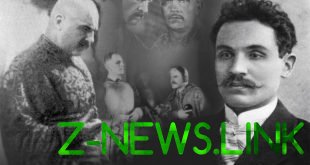 Interesting historical myths.
Interesting historical myths.
Edison invented the light bulb, Einstein was a poor student, and Marie-Antoinette advised all the diet cakes — true or not?
We will tell, how all was actually.
A Viking helmet with horns

Helmet with horns — a necessary detail of an image of a Viking in a movie, art gallery or a computer game. In fact, the helmets of the Scandinavians were common as the others. Additional “decoration” of the soldiers of the Torah according to some reports has awarded the Catholic Church. As the Normans, as they called them in Latin sources, was very warlike and often attacked the churches and monasteries, they were declared devil.
The picture of a bearded Viking in a horned helmet was fixed in the public consciousness when, in 1820-ies the Swedish painter August Malmström thus illustrated the poem “the Saga about Frithjof” Esaias of Tegner, and later, in 1876-m, his colleague Carl Doppler used the drawings when creating the costumes for Richard Wagner’s Opera “Ring des Nibelungen”.
And still hats of similar design are met. For example, in Japan there was a samurai helmets Kabuto — commanders. Two such bronze helmet Dating from 1100 — 900 years BC were found by archaeologists near the Danish town of Vexo, and in 1868 a similar finding was discovered in the Thames. But scientists are unanimous: such hats existed for ceremonial and decorative purposes, but not for the battle: too uncomfortable.
Gladiator — always male

The default assumption is that the Gladiator is definitely the man. This is not so. Judging by the extant sources, especially the mass participation of women in gladiatorial combat was during the reign of Nero (54 — 68 ad) and Domitian (81 — 96 ad). The Greek historian dio Cassius in his “Roman history” tells about the feast hosted by the Emperor Nero, where men and women, with the permission of the Senate, played in orchestras, circus, participated in horse competitions and Gladiator fights.
To the cruel amusements are loyal not all. In the “Annals” of Tacitus, devoted to the events of 63-64 years BC, markedly apparent conviction: “This year is also marked by a device of the gladiatorial games, not inferior in magnificence to the previous; but also a greater number of noble women and senators disgraced himself entering the arena”.
Slave and commoner came to the arena because of poverty or coercion, but the noble ladies acted quite deliberately, set a goal to shock the society. It’s not once tried to ban in law, until a final veto on the participation of women in gladiatorial combat is not imposed 200 year the decree of the Emperor Septimius Severus.
Marie-Antoinette advised to eat cake

Marie Antoinette, wife of king Louis XVI during the French revolution, was declared the inspiration of conspiracy and executed on the guillotine. (It was only a death mask). But no less a sin that testifies to the disregard for the common people, were people like said Her Majesty: “If they have no bread, let them eat cake”.
However, this phrase, in another context, for the first time sounded when Marie Antoinette was still a 14-year-old a Princess and lived in his native Austria (1769). Jean-Jacques Rousseau in his Confessions wrote: “How to do to have bread? To buy myself I would never have dared. To sir, with sword, went to the Baker to buy bread — how could it be? I finally remembered what the output came up with a Princess; when she was told that the peasants had no bread, she replied: “Let them eat brioche,” and I began to buy brioche”. It is difficult to say whether there was a seditious meaning in the words “one Princess”. According to some versions, in those days there was a law: if not enough bread, the merchants had to sell at his price is expensive cakes.
Einstein was a poor student

The failure of the great physicist is “an iron excuse” for students of all ages. Like, if the Nobel laureate was expelled from school for not knowing math, we do not sin, it does not know.
Rumors are often exaggerated: “specialized subjects” albert Einstein knew perfectly. He said: “I never flunked math… When I was fifteen I perfectly mastered differential and integral calculus”. But in the Munich gymnasium the teenager had other problems: he is “constantly demanded evidence of religion and chose free-thinking” that has led to tense relations with the teachers. Not getting your diploma, Einstein went to study in Switzerland, in the town of Aarau. In his matriculation 4 the highest rating — “six” (history, algebra, geometry, physics), the lowest score — 3 — French. And instead of grades in English and all is blank (but Italian — 5). A significant role in the creation of the myth about Einstein-the losers played and the fact that one of the earliest biographers of the author of the theory of relativity confused the Swiss scale of marks from German, where the highest score is “unit”.
Edison invented the light bulb

And now among the fashion interior you can see the stylized “Edison bulbs”. The achievements of Thomas Edison’s undeniable: 1093 inventions patented only in the United States. But, as often happens, many of them were “collective creativity”: the idea soared in air. So it was with a lamp.
English scientist Humphrey Davy in 1809, described the arc electric discharge between two carbon rods. And by the mid-nineteenth century to the establishment of the electric light joined the best minds of Russia, Europe and America.
Belgian Jobard. constructed a lamp with a carbon core (combustion did not exceed half an hour). The Briton Warren de La Rue created the first ever analog with a spiral. The German Heinrich göbel presented a vacuum lamp with a carbonized bamboo filament (the device can operate for several hours). Russian engineer Alexander Lodygin patented vacuum bulb with a carbon rod.
Research continues in the patents multiplied, the device is improved. Joseph Wilson Swan due to the rarefied oxygen atmosphere managed to get a very bright light. Thomas Edison spent about 1500 of testing different materials and created a lamp that could burn for 40 hours. Lodygin first proposed the use of filaments of tungsten and molybdenum in the form of a spiral… So, collectively, was born the familiar light bulb.
Its shape, a screw base socket and rotary switch — an undoubted merit of the Edison. But the greatest merit in the other. In 1882, the inventor said, “We will make electricity so cheap that only the rich will burn candles”. And immediately proceeded to business. In the same year, Edison built the first in new York substation and founded the company Edison General Electric on the manufacture of lighting devices. At a cost of 110 cents, he set the selling price of the bulb 40 cents. Within 4 years, the production of light bulbs increased, and cost decreased. When it fell to 22 cents, and the production grew to a million, Edison in one year to cover all losses. And made electric lighting available to all.
© 2017, paradox. All rights reserved.





